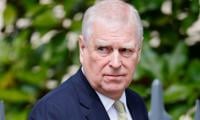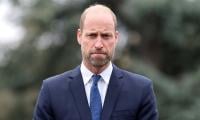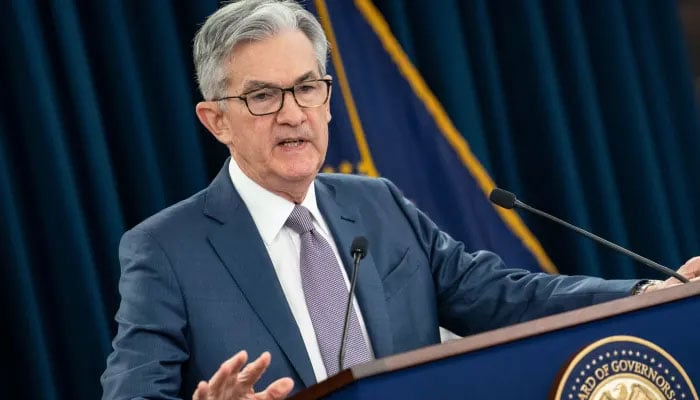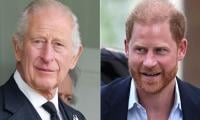Fed’s Powell hints interest rates will stay high as US inflation lingers
Frankfurt/Washington: Jay Powell said the Federal Reserve was looking at “keeping policy at the current rate for a longer time than had been thought” in the face of more persistent US inflation than expected.
Speaking at an event in Amsterdam in the Netherlands, the Fed chair said the US economy had been “performing very well lately” but the first months of 2024 had been notable for the “lack of progress” when it came to bringing inflation down to the central bank’s 2 percent target.
Powell said he expected inflation “will move back down on a monthly basis to levels that were more like the lower readings we were having last year” but “my confidence in that is not as high as it was”. He added the Fed needed to be “patient and let restrictive policy do its work”.
Still, Powell reiterated he did not expect the Fed to raise interest rates any further in light of stubborn inflation.“By many, many measures, the policy rate is restrictive,” Powell said, adding that “time will tell” whether it was “sufficiently restrictive” but there was only a “very small probability” that the next move would be to increase rates.
Krishna Guha, vice-chair of US investment bank Evercore-ISI, said Powell’s comments “suggest the Fed seems to be looking past the July meeting and is more oriented towards September for a possible first cut”.
US inflation has remained higher than forecast for much of this year, denting investors’ hopes that the Fed would cut rates multiple times before the end of 2024.
In contrast, price pressures in Europe have continued to ease, opening the door for central banks in the region to cut rates before the Fed in a reversal to the traditional pecking order in global monetary policy. The Swiss and Swedish central banks have cut rates and the European Central Bank is expected to do the same at its meeting on June 6.
Dutch central bank boss Klaas Knot, a member of the ECB’s rate-setting governing council, told the same event in Amsterdam that if Eurozone inflation kept falling as expected it would be “appropriate for us to gradually take our foot off the brake” by starting to cut rates next month.
But Knot said the recent “bumpiness” of US inflation was “a warning sign” for Europe that it could experience a similar rise in price pressures, adding that this was a reason “not to have any pre-emptive declarations of victory” on inflation.
He also warned that while wage rises seemed to be gradually slowing, Europe’s weak productivity growth would keep pushing up labour costs, which meant he would give “no commitment whatsoever” to any further easing beyond June.
Some ECB policymakers have warned there are limits to how much it can diverge from the Fed, which usually takes the lead on policy shifts. However, Knot said it would “not have that much impact” on Eurozone inflation if the ECB cut rates before the US central bank.
-
 Kensington Palace Shares Major Update About Kate Middleton After Meghan Markle Plans
Kensington Palace Shares Major Update About Kate Middleton After Meghan Markle Plans -
 Kate Middleton Stepping Back Into Spotlight With Carefully Planned Schedule
Kate Middleton Stepping Back Into Spotlight With Carefully Planned Schedule -
 AI Boom Set To Lift TSMC’s Q4 Profit By 27%
AI Boom Set To Lift TSMC’s Q4 Profit By 27% -
 Golden Globes 2026: Fire Breaks Out Backstage While Celebrities Accept Awards
Golden Globes 2026: Fire Breaks Out Backstage While Celebrities Accept Awards -
 Study Finds Your Morning Coffee Could Help With Type 2 Diabetes
Study Finds Your Morning Coffee Could Help With Type 2 Diabetes -
 Real Reason Andrew Is Unlikely To Move To The UAE Despite Middle East Ties
Real Reason Andrew Is Unlikely To Move To The UAE Despite Middle East Ties -
 Is ‘web Traffic Apocalypse’ Coming? AI Search Summaries Alarm Publishers
Is ‘web Traffic Apocalypse’ Coming? AI Search Summaries Alarm Publishers -
 Westfield Bondi Junction Hero Inspector Amy Scott Faces Rare Cancer Diagnosis
Westfield Bondi Junction Hero Inspector Amy Scott Faces Rare Cancer Diagnosis -
 2026 Golden Globe Awards: Here's The Complete List Of Winners
2026 Golden Globe Awards: Here's The Complete List Of Winners -
 Malaysia Restricts Access To Grok AI As Backlash Over Explicit Content Widens
Malaysia Restricts Access To Grok AI As Backlash Over Explicit Content Widens -
 Jerome Powell Faces DOJ Criminal Probe As Questions Mount Over Fed Autonomy
Jerome Powell Faces DOJ Criminal Probe As Questions Mount Over Fed Autonomy -
 Justin Herbert Girlfriend Reveals How He Changed Her Life
Justin Herbert Girlfriend Reveals How He Changed Her Life -
 Blood Pressure Medication Linked With Suicide Risk? New Study Explains
Blood Pressure Medication Linked With Suicide Risk? New Study Explains -
 Golden Globes 2026: Julia Roberts Gets Standing Ovation From Audience
Golden Globes 2026: Julia Roberts Gets Standing Ovation From Audience -
 Kensington Palace Releases Statement Clarifying Role Of Prince William’s New Aide
Kensington Palace Releases Statement Clarifying Role Of Prince William’s New Aide -
 Scooter Braun Addresses Public Backlash Over Romance With Sydney Sweeney
Scooter Braun Addresses Public Backlash Over Romance With Sydney Sweeney




